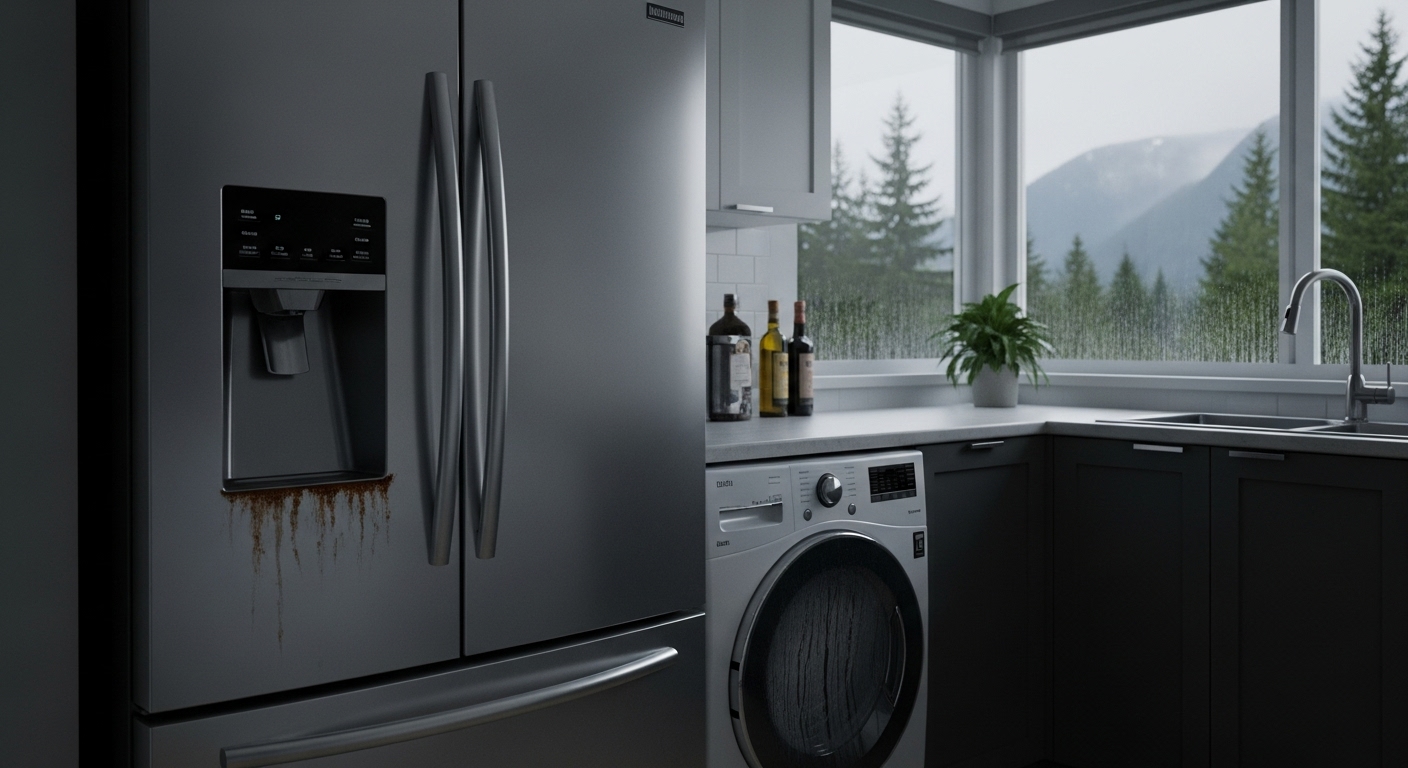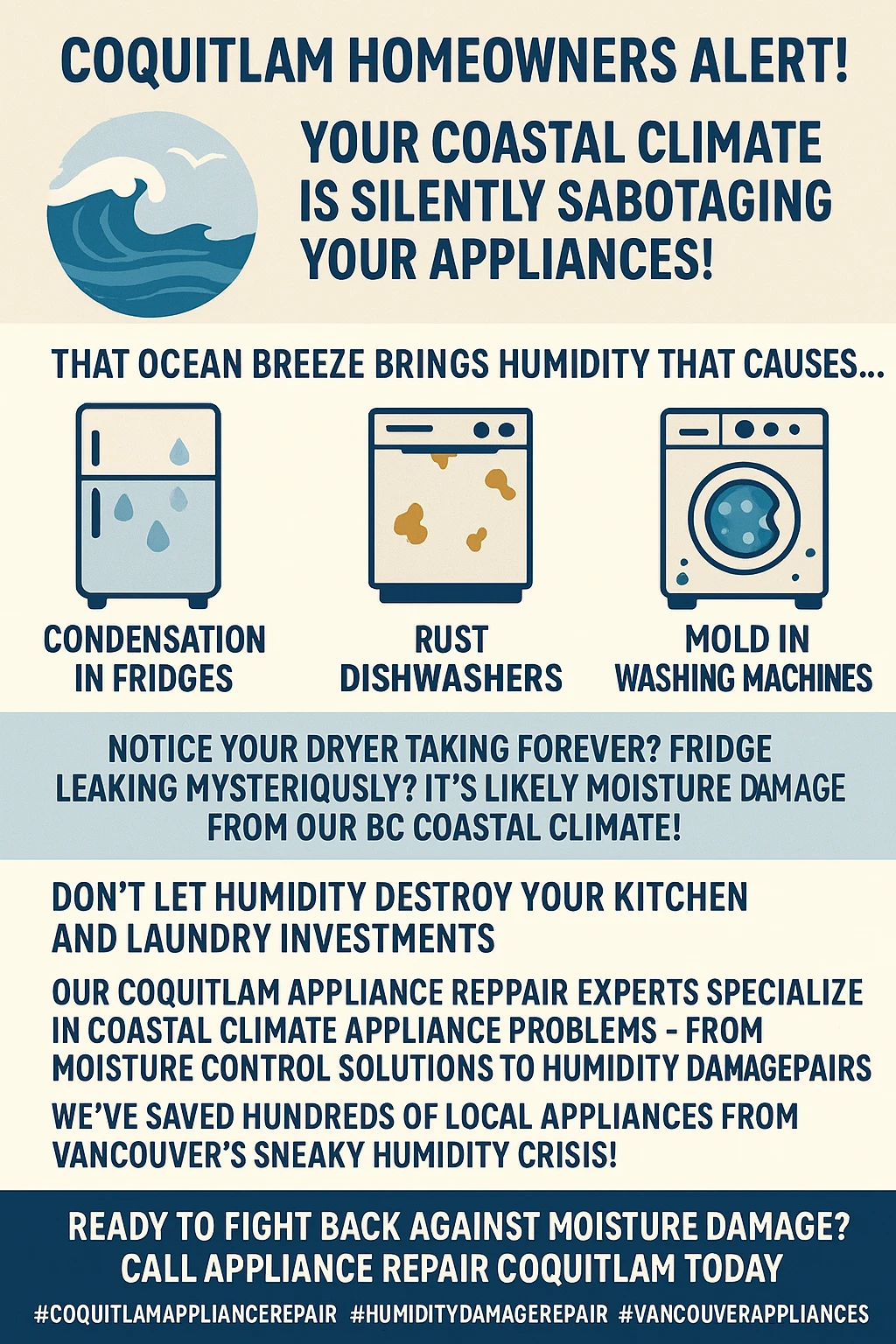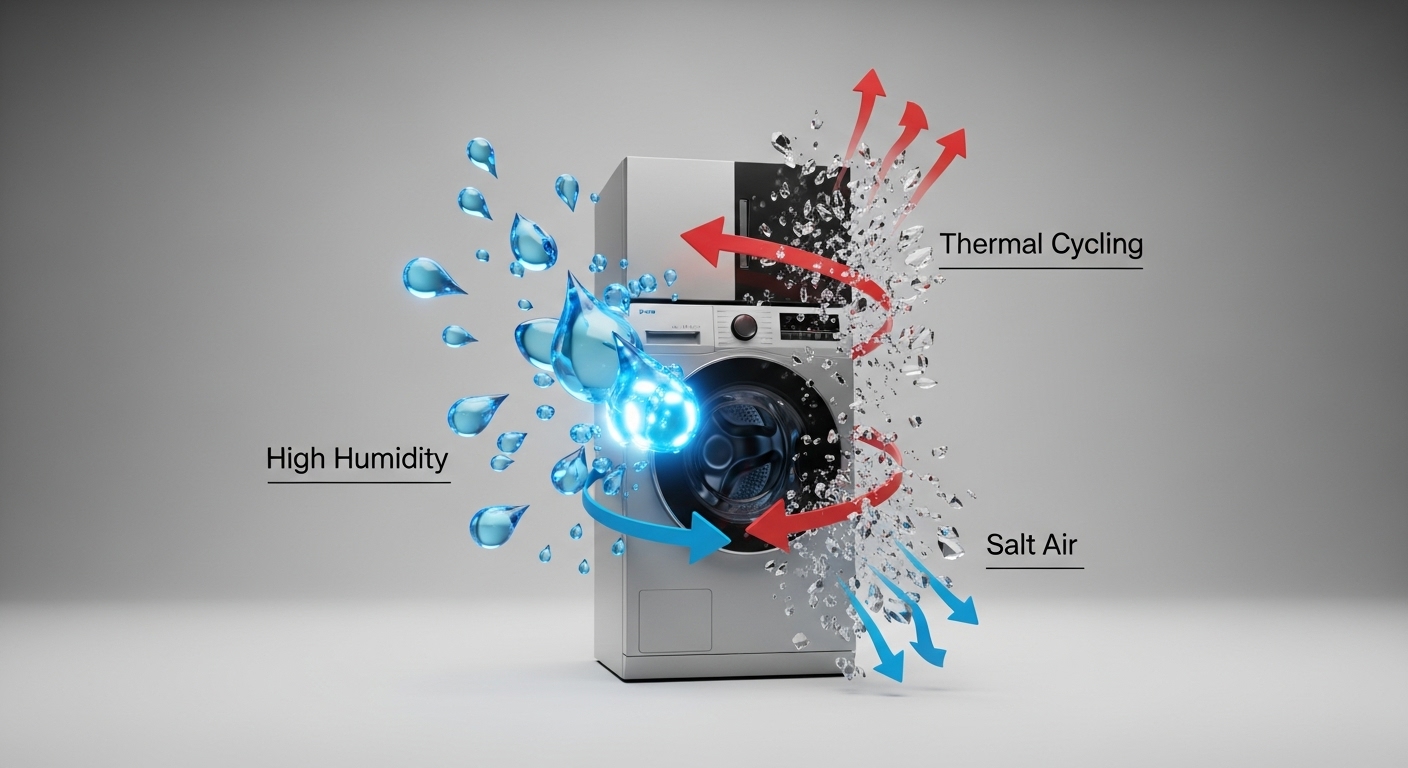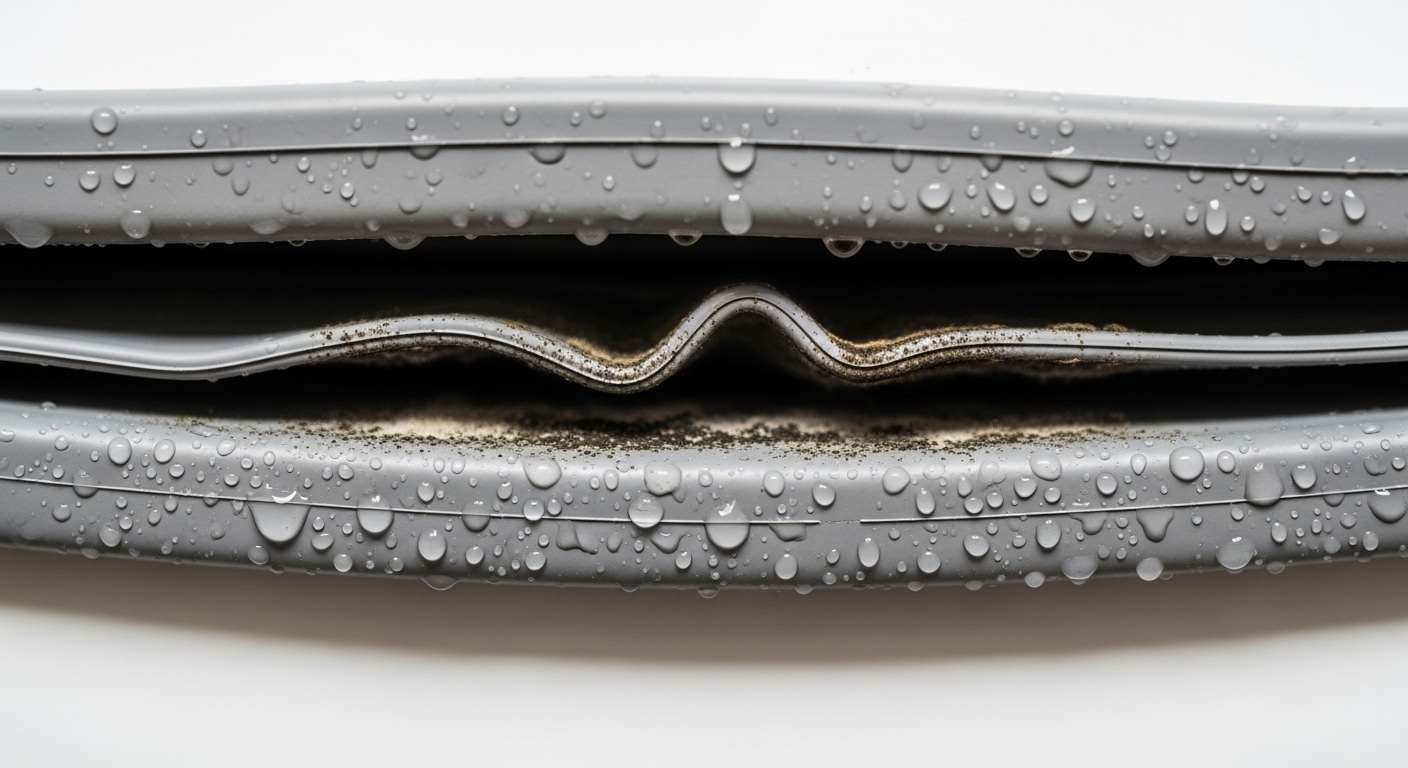The Appliance Humidity Crisis: Why Coquitlam’s Coastal Climate Is Secretly Destroying Your Kitchen and Laundry Appliances (And How to Fight Back)
Tired of your expensive appliances mysteriously breaking down just years after installation despite following all the maintenance guidelines? Coquitlam’s unique coastal climate creates a perfect storm of humidity, salt air, and temperature fluctuations that can slash your appliance lifespan by up to 40% – and most homeowners never see it coming until their repair bills start piling up.
Picture this nightmare scenario that’s becoming all too common in Coquitlam homes: You wake up on a typical drizzly morning to discover your three-year-old front-loading washer has developed that telltale musty smell, your stainless steel refrigerator has mysterious rust spots appearing around the water dispenser, and your dishwasher is leaving everything covered in a weird film instead of sparkling clean. What seems like a string of bad luck is actually your appliances crying for help against an invisible enemy that’s been attacking them since day one.

The harsh reality is that Coquitlam’s position between the Fraser River and the Coastal Mountains creates environmental conditions that appliance manufacturers never anticipated when they designed your kitchen and laundry equipment in sterile laboratory settings. We’re dealing with humidity levels that hover between 80-91% throughout much of the year, salt particles that can travel over 25 kilometers inland from the Pacific Ocean, and temperature swings that stress every seal and gasket in your home. This triple threat doesn’t just make your appliances work harder – it systematically destroys them from the inside out through corrosion, mold growth, and electronic failures that often manifest as mysterious performance problems long before any visible damage becomes apparent.
Understanding these hidden environmental threats isn’t just about protecting your appliances – it’s about safeguarding your investment in your home and avoiding those panic-inducing moments when essential equipment fails right when you need it most. The good news is that with the right knowledge and proactive approach, you can extend your appliance lifespans by years while dramatically reducing those expensive emergency repair calls that always seem to happen at the worst possible times.
Key Outtakes:
- Coquitlam’s coastal humidity can reduce appliance lifespan by 20-40% compared to drier inland locations due to persistent moisture exposure and salt air corrosion
- Electronic control boards and rubber seals are the most vulnerable components, with humidity causing failures that manifest as mysterious performance issues long before visible damage appears
- Front-loading washers and refrigerators with ice makers are particularly susceptible to mold growth and condensation issues in Coquitlam’s 80-91% humidity environment
- Implementing strategic moisture control measures can extend appliance life by 3-5 years while reducing repair frequency by up to 80%
- Professional maintenance during Coquitlam’s dry season (July-August) provides optimal conditions for deep cleaning and preventative care

Understanding Coquitlam’s Unique Climate Challenge for Appliances
Before we dive into specific solutions, we need to understand why Coquitlam presents such unique challenges for household appliances. Our city’s location creates what experts call a “microclimate” – environmental conditions that are dramatically different from what appliances experience in most other parts of Canada or the testing facilities where they’re designed.

Coquitlam experiences humidity levels ranging from a “low” of 72% in summer to a staggering 91% during winter months, well above the 30-50% range that most appliances are optimized to handle. This isn’t just about feeling muggy on summer days – this persistent moisture infiltrates every component of your appliances, creating conditions for corrosion, electrical failures, and biological growth that can destroy expensive equipment in just a few years instead of the expected decade or more.
The salt air factor adds another layer of destruction that many homeowners don’t realize affects them. Even if you’re not living directly on the waterfront, salt particles from the Pacific Ocean can travel up to 25 kilometers inland, especially during storms or high winds. This means homes throughout Coquitlam, Port Coquitlam, and surrounding areas are exposed to salt that settles on appliance surfaces and gradually works its way into internal components, where it creates an aggressive corrosive environment that attacks metal parts from the inside out.
Temperature fluctuations between our mild 32°F winters and warm 77°F summers create what engineers call “thermal cycling” – repeated expansion and contraction that gradually weakens seals, gaskets, and connection points throughout your appliances. Unlike cities with more stable seasonal patterns, Coquitlam’s frequent transitions between different temperature ranges mean your appliances never get a break from this constant stress, leading to premature seal failures and component loosening that can cause leaks, performance issues, and complete breakdowns.
The combination of these three factors – persistent humidity, salt air corrosion, and thermal cycling – creates what appliance specialists describe as a perfect storm of environmental stressors that can reduce equipment lifespans by decades. Understanding this helps explain why your neighbor’s appliances seem to break down more frequently than your relatives who live in drier interior locations, and why following standard manufacturer maintenance schedules often isn’t enough to prevent problems in our coastal environment.
Appliances Most at Risk in Humid Coastal Environments
Not all appliances suffer equally in Coquitlam’s challenging climate. Understanding which pieces of equipment are most vulnerable helps you prioritize your maintenance efforts and budget for replacements before emergency situations arise. The appliances that struggle most are those that either rely heavily on electronic controls or deal with moisture as part of their normal operation.
Front-loading washing machines top the list of vulnerable appliances because their horizontal drum design and rubber door seals create perfect environments for mold and bacteria growth. The seal around the door, which is essential for preventing leaks during wash cycles, becomes a moisture trap in humid environments like ours. Research shows that 14% of Consumer Reports members complained about mold appearance in front-loaders, and this problem is significantly worse in coastal climates where the seals never fully dry between uses.

Refrigerators face unique challenges in humid environments, particularly models with ice makers and water dispensers. High humidity causes condensation problems that lead to ice buildup in unexpected places, water leakage, and frequent component failures. Statistics show that 17% of refrigerator complaints involve water and ice dispenser malfunctions, with many of these problems directly linked to humidity affecting the delicate mechanisms that control ice production and water delivery.
Electronic control boards across all modern appliances represent perhaps the most expensive vulnerability in humid climates. These sophisticated computer systems that manage everything from wash cycles to temperature control are extremely sensitive to moisture infiltration. When water vapor gets into control boards, it can cause immediate short-circuits or long-term degradation through electrochemical processes that gradually move metallic ions within semiconductor components, leading to mysterious intermittent failures that are notoriously difficult to diagnose and expensive to repair.
Dishwashers present a particularly complex challenge because they must manage both the moisture generated during their cleaning operations and the external humidity from Coquitlam’s environment. The heating elements and drying systems work significantly harder in humid conditions, as they must overcome not only the water from wash cycles but also elevated ambient humidity that prevents proper air drying. This increased workload shortens heating element lifespans and can lead to incomplete drying cycles that promote bacterial growth and unpleasant odors.
Clothes dryers struggle with moisture that never fully evacuates during Vancouver’s notoriously wet seasons. When outdoor air is saturated with moisture, dryer exhaust systems can’t eliminate humidity effectively, leading to longer drying times, increased energy consumption, and potential moisture buildup in vent systems. Weather extremes particularly impact dryer vent health, with winter conditions causing moisture to freeze in exhaust pipes and creating dangerous blockages that can lead to fire hazards or carbon monoxide issues with gas units.
The Hidden Costs of Humidity Damage
The financial impact of humidity damage extends far beyond obvious repair bills. Understanding the true cost helps justify investment in preventative measures and explains why some homeowners face seemingly endless appliance problems while others enjoy years of